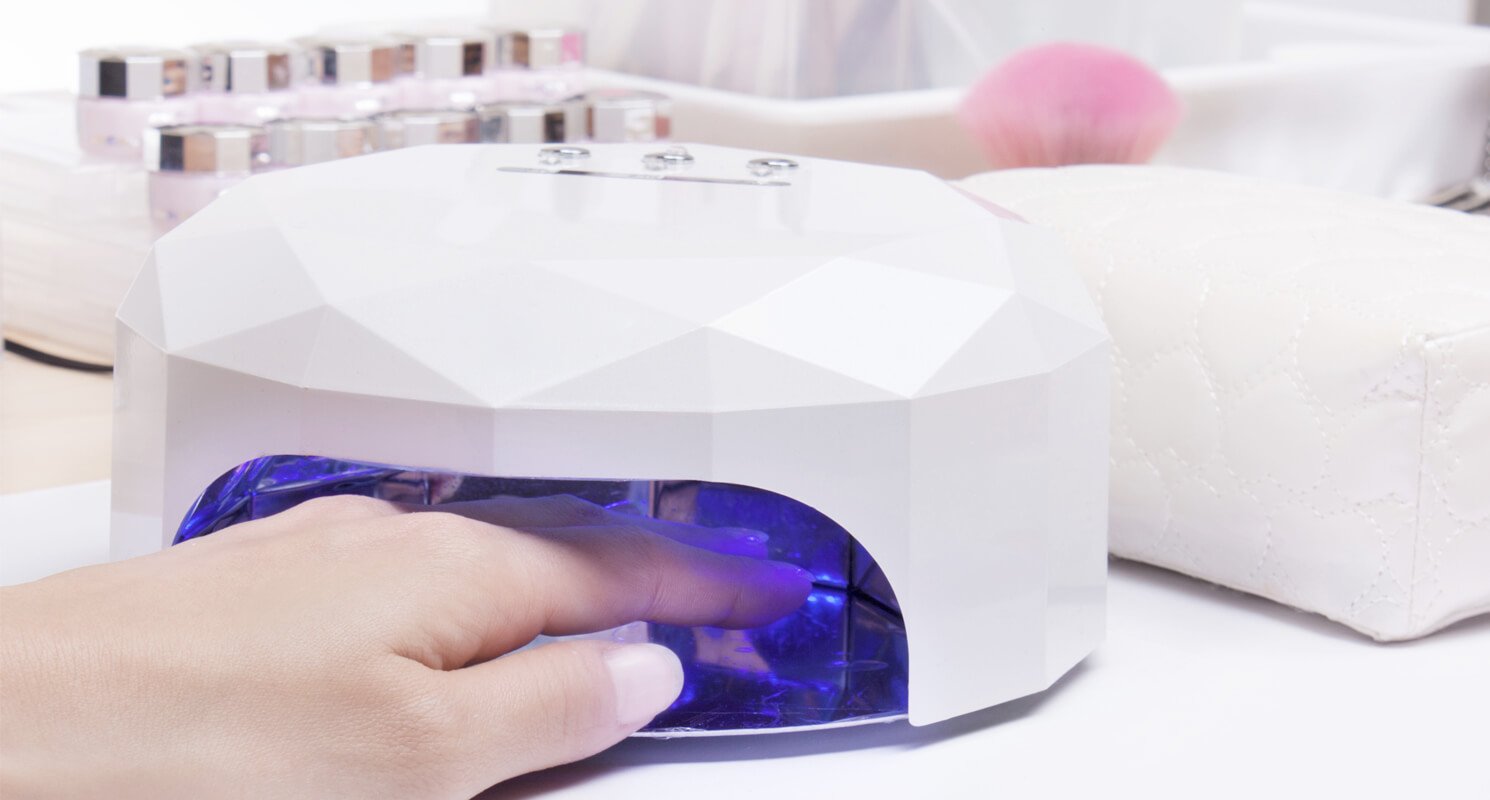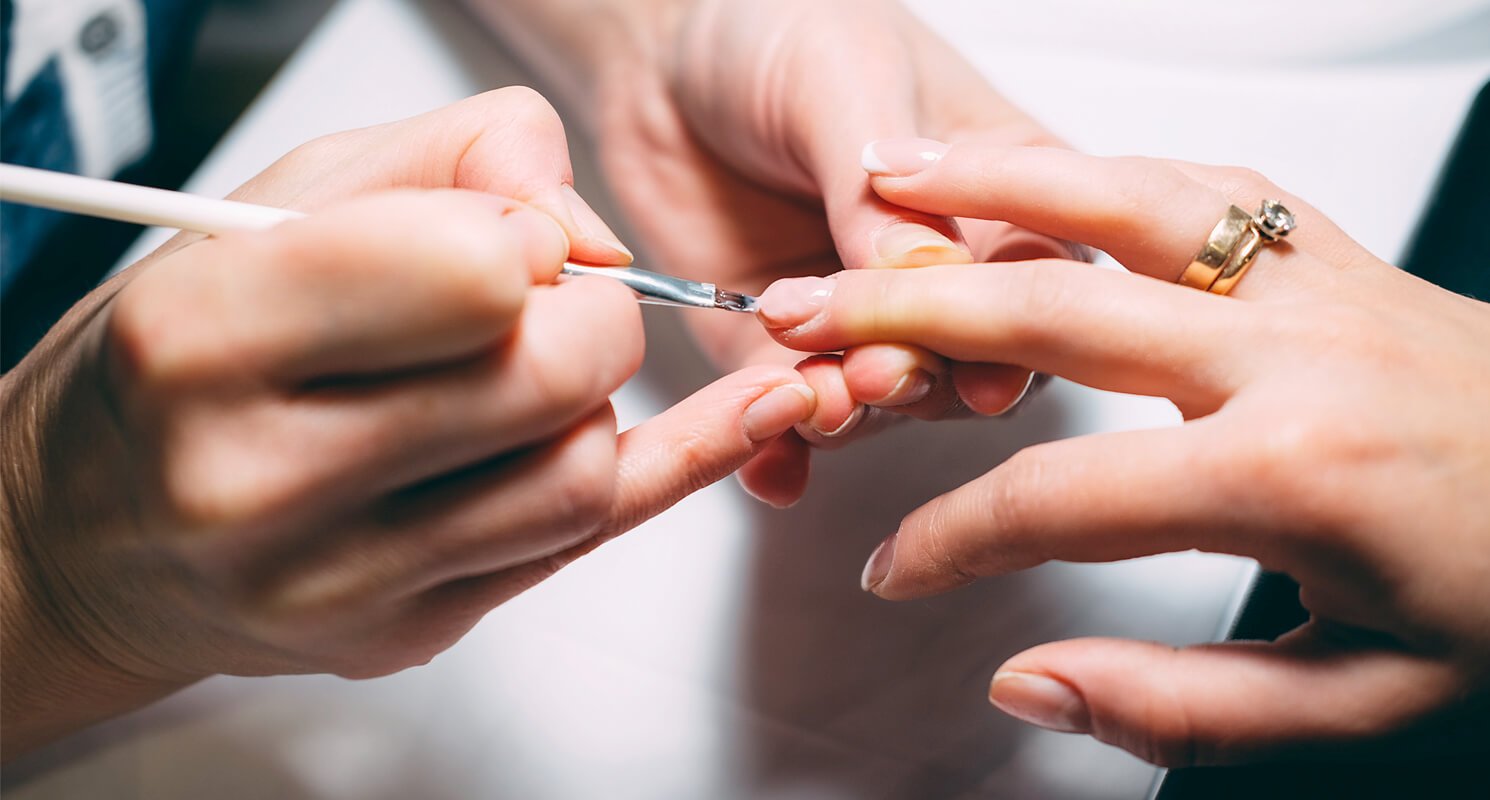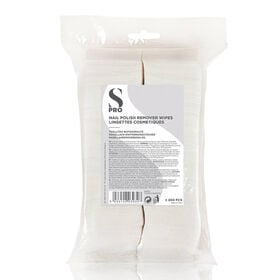Gel and acrylic nail polish allergies are becoming much more common than ever before, and your clients may even be asking you “why am I allergic to gel nails all of a sudden?” This is due to an allergic reaction to an ingredient called (meth)acrylate, which has become a more regularly occurring allergy due to improper use of gel nail polish and/or the improper procedure followed during acrylic nail application. Read our guide on how to treat an allergic reaction to gel nail polish, what alternatives are out there and what signs are there to identify if your client has an allergy. Many gel and acrylic nail products contain (meth)acrylates, which can occasionally cause allergic reactions, so if your client is apprehensive, their nervousness is understandable. When you also consider that nail products don’t require a patch test like hair colour does, and the other potential allergens in your nail bar such as dust exposure and latex gloves, it’s a lot to think about when booking in for a manicure.
What to do if you or your client has an allergic reaction to acrylic or gel nails.

What to do when a client has a gel or acrylic nail allergy

What causes allergic reactions in nail clients?
The cause of any client’s allergic reaction will be the ingredients found in the products you’re using. Now, according to a recent UK audit by 13 dermatology units, 2.4% of people tested positive for an allergy to at least one type of (meth)acrylate. Almost two-thirds of these people developed their allergy through “recreational exposure” to nail glue or enhancements, while one third were nail technicians who developed their allergy through product exposure at work.
The biggest risk of a reaction comes from exposure to uncured polish on the skin and people using at-home gel kits without the proper safety precautions. However, it’s important to note that this can also happen in salons.
How do you know if a client has an allergic reaction to a nail treatment?
The most common symptoms to look out for on clients with allergies to gel and acrylic polish include:
- Nails loosening
- A red and itchy rash
- Swelling
- In the rarest of cases, breathing problems
Keep in mind that your client’s rash isn’t always limited to the area around the nails. Irritation can potentially happen anywhere that has come into contact with the nails, including the eyelids, cheeks, hands and neck. In the rarest cases, nail product allergies can cause breathing problems.
How can I prevent allergic reactions for my clients and myself?
1. Avoid skin contact
Avoiding skin-to-skin contact during your client’s appointment is the first step in preventing allergies because it limits potential exposure to irritants. For this reason, we recommend the S-PRO Nitrile Gloves. These are a great alternative for nail technicians and clients who are allergic to latex, but they still offer the full flexibility to perform precise manicures. Always remember to dispose of your nitrile gloves after every client to prevent any cross-contamination or further allergy risks.
If you’re still concerned about your client’s skin coming into contact with your gel and acrylic products, you can also apply liquid tape around the nail before their manicure.
2. Use the right equipment
Using the correct UV lamp for gel polishes is also vital to prevent allergic reactions. Using the wrong lamp can mean the gel polish doesn’t cure properly, and this increases the risk of allergies. A great pairing for your salon or freelance business, and a good example of matching your lamp with your polishes, is the ASP 36 Watt UV Lamp with the ASP Signature Gel Polish.
3. Watch out for dust
Dust from the air and from your products, such as an electric nail file, can potentially be a problem if your client has allergies. With this in mind, make sure you always keep your desk clean and change your disposable towel after each client. If you want to take extra care with each manicure, consider getting the S-PRO Nail Station with Extractor Fan. As you can probably tell from its name, this table features an extractor fan specially designed to capture dust on, and around, your work area.
4. Remove the gel polish inhibition layer correctly
Leaving the inhibition layer on your client’s gel polish can cause overexposure to uncured polish and lead to potential allergic reactions. When removing this sticky layer, make sure you take the following steps:
- Starting with the smallest finger, gently wipe the S-PRO Nail Wipes from the cuticle to the free edge. This avoids dragging the liquid and dissolved uncured gel onto the client’s skin.
- Repeat step one on the remaining fingers of that hand, again from the smallest to biggest.
- Use a fresh cotton pad to wipe the other hand and repeat steps one and two.
Shop nail products to help your clients avoid getting an allergic reaction

What should I do if I think my client or myself has an allergy?
If you suspect that you or your client is experiencing a reaction to their manicure, immediately remove the product and apply a fragrance-free, hypoallergenic moisturising cream to cleanse the hands and prevent further irritation.
We would then recommend visiting a dermatologist, because they’ll be able to determine exactly which ingredient/s you or your client are reacting to in the gel or acrylic products. They’ll also be able to provide a prescription cream to treat any current skin inflammation.
If you are allergic to gel or acrylic, what are the alternatives?
Developing an allergy to an ingredient used in nail treatments doesn’t mean your client should give up visiting your nail bar, or you should leave your job as a nail technician. The best advice is to avoid any products and treatments that contain the ingredient your dermatologist says you are allergic to.



